The world of envelopes is vast and confusing – we’ve covered some of it on our Blue Summit Supplies blog, from business envelope dimensions to types of envelope seals. We even have some handy infographics to simplify your search for the perfect envelope. But beyond business envelopes and envelope seals, there is even more to know about envelopes.
Like sizing.
Envelope Sizing Around the World
Envelope sizing is tricky because, as we mentioned before, it’s not globally standardized. Different parts of the world use different sizing for their envelopes and pages. In most of North America – the US, Canada, and some Latin American countries – we use named standard sizes for paper like Legal, Letter, Executive, and Tabloid.

| North American Standard Paper Sizes | ||
| Paper Size | Dimensions | Typical Usage |
| Half Letter | 8.5" x 5.5" | Book pages, greeting cards, postcards |
| Letter | 8.5" x 11" | Letterheads, print & copy paper, notepads |
| Legal | 8.5" x 14" | Flyers, brochures |
| Ledger(also known as ledger or tabloid) | 11" x 17" | Posters, magazines, publications |
But we’re in the minority. Most of the world uses the ISO 216 and ISO 269 standard paper sizes, which are split into A, and B, whereas the C category denotes envelopes. A4 is the most commonly used paper size everywhere except for North America, where we don’t use the ISO 216 or ISO 269 as standard. A4 paper is comparable to our letter-size paper, though the dimensions are slightly different.
Here’s where the letters and numbers come in.
Instead of connoting sizes with names like Legal, Letter, etc. the ISO 216 & ISO 269 standards split paper and envelope sizes into alphanumeric identifiers – like A1, B2, C3. That’s why a C4 envelope size is different than a C5 envelope size even though their names are so similar. Each size has its own dimensions down to the tenth of an inch and are measured most commonly in millimeters. We’ve provided a handy paper types size chart to make it easier to understand ISO 216 & ISO 269 standard paper sizing.

| ISO 216 Standards: A Series Sizes | |
| Paper Size | Dimensions |
| A0 | 841 mm × 1189 mm |
| A1 | 594 mm × 841 mm |
| A2 | 420 mm × 594 mm |
| A3 | 297 mm × 420 mm |
| A4 | 210 mm × 297 mm |
| A5 | 148 mm × 210 mm |
| A6 | 105 mm × 148 mm |
| A7 | 74 mm × 105 mm |
| A8 | 52 mm × 74 mm |
| A9 | 37 mm × 52 mm |
| A10 | 26 mm × 37 mm |

| ISO 216 Standards: B Series Sizes | |
| Paper Size | Dimensions |
| B0 | 1000 mm × 1414 mm |
| B1 | 707 mm × 1000 mm |
| B2 | 500 mm × 707 mm |
| B3 | 353 mm × 500 mm |
| B4 | 250 mm × 353 mm |
| B5 | 176 mm × 250 mm |
| B6 | 125 mm × 176 mm |
| B7 | 88 mm × 125 mm |
| B8 | 62 mm × 88 mm |
| B9 | 44 mm × 62 mm |
| B10 | 31 mm × 44 mm |

| ISO 269 Standards: C Series Sizes | |
| Envelope Size | Dimensions |
| C0 | 917 mm × 1297 mm |
| C1 | 648 mm × 917 mm |
| C2 | 458 mm × 648 mm |
| C3 | 324 mm × 458 mm |
| C4 | 229 mm × 324 mm |
| C5 | 162 mm × 229 mm |
| C6 | 114 mm × 162 mm |
| C7 | 81 mm × 114 mm |
| C8 | 57 mm × 81 mm |
| C9 | 40 mm × 57 mm |
| C10 | 28 mm × 40 mm |
| Examples of how ISO page sizes are used | |
| Size | Typical Usage |
| A0, A1 | Technical drawings, posters |
| A2, A3 | Drawings, diagrams, large tables |
| A4 | Letters, Magazines, forms, catalogs, print & copy paper |
| A6 | Postcards |
| A5, B5, A6, B6 | Book pages |
| C4, C5, C6 | Envelopes for A4 letters (either unfolded, folded once, or folded twice, respectively) |
For a more in-depth look into paper formatting and application, check out this resource.
Finding the Right Folded Fit
For US paper sizes, there are three main envelope categories: Commercial, Catalog, and Announcement. (There are also less commonly used styles of envelopes.) For business purposes, you will be using primarily commercial envelopes. These envelopes are long and slender. The most common type of commercial envelope size is the Number 10 envelope size since it fits folded Letter-size and Legal-size paper.
You can further break down your envelope needs depending on what sort of documents you’re mailing. There are simple gummed mail envelopes whose purpose is just to get its contents where it’s headed without any bells or whistles. Then there are windowed envelopes, which take out the manpower or extra effort of addressing envelopes. A step further brings you to security envelopes, which are extra durable and tamper-proof to protect sensitive documents until they reach the intended recipient.
So how do you choose the right envelope?
Think about what you’ll be sending out. If it’s an advertisement or mailers, consider a blank envelope with a handwritten address for that extra personal touch. If it’s an invoice or other business correspondence, the address is likely printed straight on the document and a windowed envelope will save you time. Prepaid envelopes are also an option if you send out a high volume of mail.
As far as sizes, bigger is always better. The last thing you want is envelopes too narrow or shallow for your contents, so be thorough and make sure your paper and envelopes are complementary. But don’t go too big; a baronial envelope, for example, is overkill for sending a bill.
There are some envelope-paper combinations, like Letter and No. 10, that are tailor-made for one another. If you have a less standard paper size, however, a No. 10 envelope should still meet your needs if you’re willing to fold the contents. For more specialty concerns, like Quickbooks checks envelope sizes, check out our niche envelope resources.
We made the process of finding your perfect fit simple by creating an envelope size chart.
Envelope Size Chart
Moving Forward
Envelopes might not seem like the most exciting topic, mainly because they’re not. But they’re an integral part of business and by learning which envelopes best serve your needs, you’re investing in your organization and ensuring top-level professionalism.
What other details do you focus on to keep your business at its best? We want to know! Leave a comment or connect with us on social media, on Twitter, Facebook, or Instagram.
 For more informative articles about office supplies, subscribe to our email newsletter!
For more informative articles about office supplies, subscribe to our email newsletter!
Never fear, you won't begin receiving daily sales emails that belong in a spam folder. Instead, we promise a fun weekly roundup of our latest blog posts and great finds from across the web. And if you lose interest, it's always easy to unsubscribe with a single click.

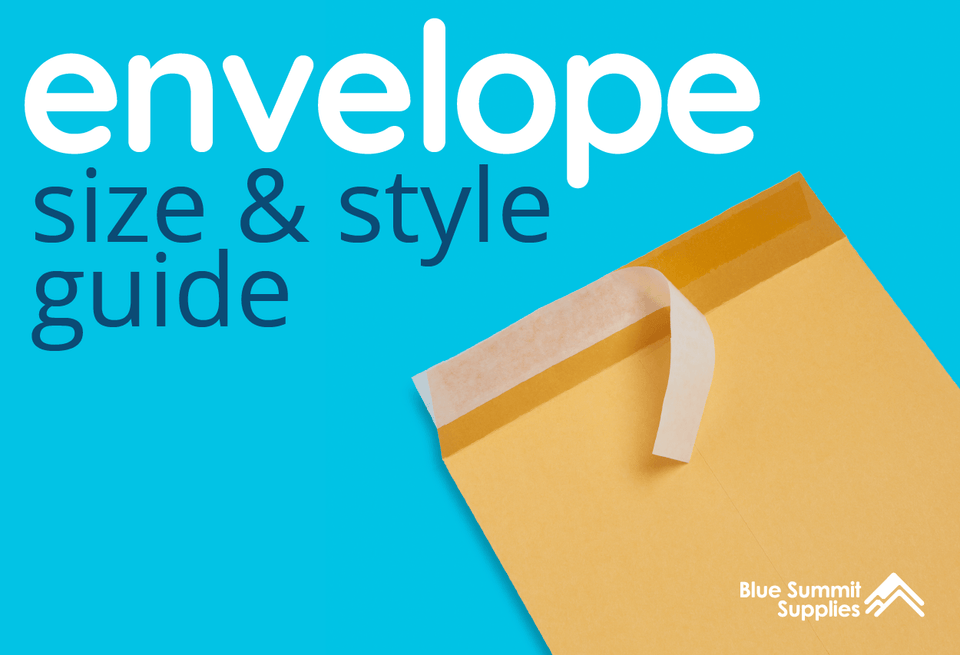


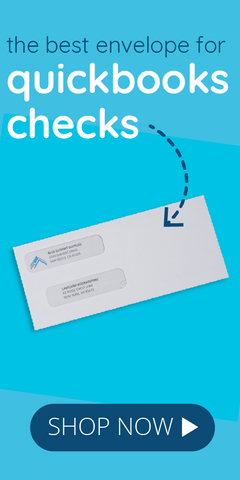
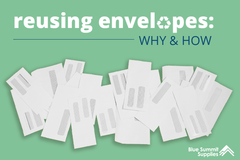
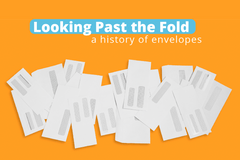
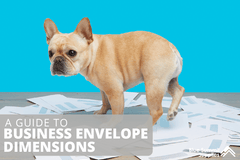
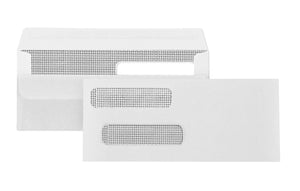
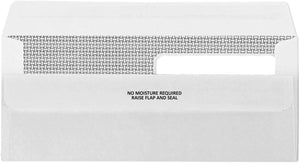
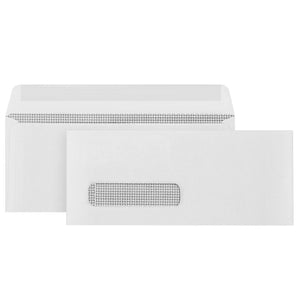
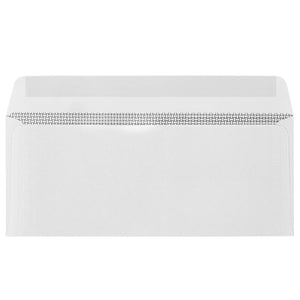
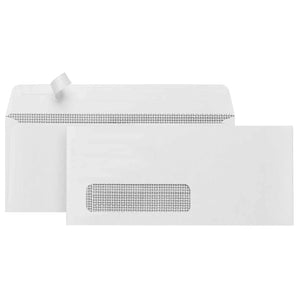
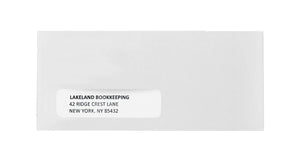
2 comments
Lizzie
Hi McKenna,
I would recommend placing your label in the center of your envelope, so that everything should have the same orientation as if it were written directly on the envelope. Hope this helps!
mckenna pierce
Hey Grace,
Thanks for this helpful article! I am using USPS Bulk Marketing Mail/ Permit Imprint to send out 10×13″ Envelopes. My design is on a 5″ × 3-1/2" sticker label that includes 1) paid postage in top right corner of label, 2) Return address in top left corner of label, and 3) Delivery address in center (slightly bottom portion) of label, all in a clearly legible format. Where do I place this on the 10″ × 13″ envelope? The USPS guidelines only specify that the delivery address be in the top portion of the envelope. Thanks!